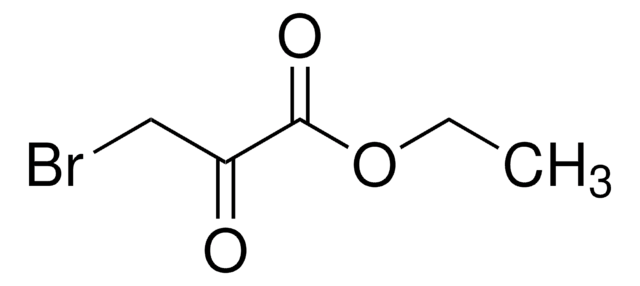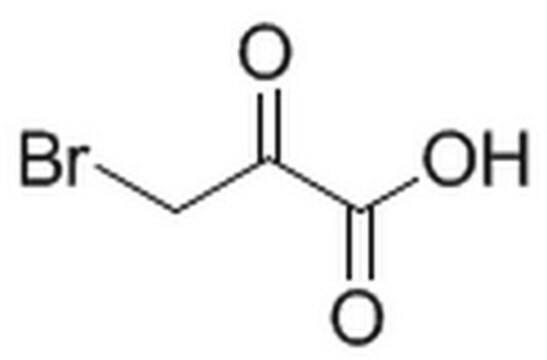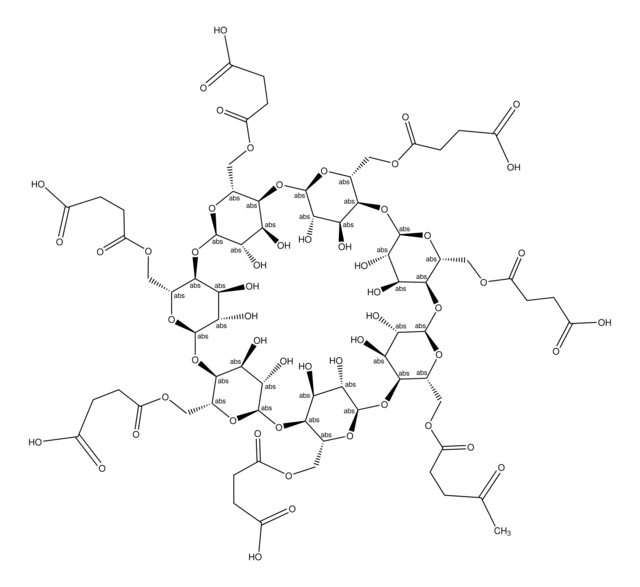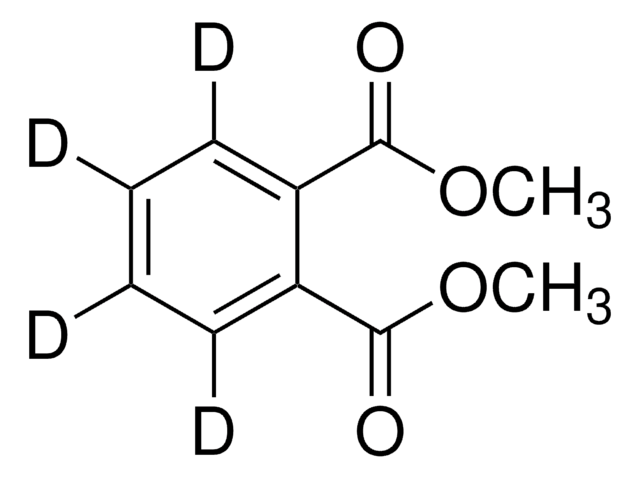Key Documents
16490
Bromopyruvic acid
≥98.0%
Synonim(y):
3-Bromo-2-oxopropionic acid
About This Item
Polecane produkty
Poziom jakości
Próba
≥98.0%
Postać
(Powder or Crystals or Flakes)
mp
77-82 °C
rozpuszczalność
water: soluble 1 g/10 mL, clear to very slightly hazy, colorless
grupa funkcyjna
bromo
carboxylic acid
ketone
temp. przechowywania
2-8°C
ciąg SMILES
OC(=O)C(=O)CBr
InChI
1S/C3H3BrO3/c4-1-2(5)3(6)7/h1H2,(H,6,7)
Klucz InChI
PRRZDZJYSJLDBS-UHFFFAOYSA-N
Szukasz podobnych produktów? Odwiedź Przewodnik dotyczący porównywania produktów
Opis ogólny
Zastosowanie
Inne uwagi
Hasło ostrzegawcze
Danger
Zwroty wskazujące rodzaj zagrożenia
Zwroty wskazujące środki ostrożności
Klasyfikacja zagrożeń
Eye Dam. 1 - Skin Corr. 1B
Kod klasy składowania
8A - Combustible corrosive hazardous materials
Klasa zagrożenia wodnego (WGK)
WGK 3
Temperatura zapłonu (°F)
Not applicable
Temperatura zapłonu (°C)
Not applicable
Środki ochrony indywidualnej
Eyeshields, Faceshields, Gloves, type P3 (EN 143) respirator cartridges
Wybierz jedną z najnowszych wersji:
Masz już ten produkt?
Dokumenty związane z niedawno zakupionymi produktami zostały zamieszczone w Bibliotece dokumentów.
Klienci oglądali również te produkty
Produkty
We presents an article about the Warburg effect, and how it is the enhanced conversion of glucose to lactate observed in tumor cells, even in the presence of normal levels of oxygen. Otto Heinrich Warburg demonstrated in 1924 that cancer cells show an increased dependence on glycolysis to meet their energy needs, regardless of whether they were well-oxygenated or not.
Nasz zespół naukowców ma doświadczenie we wszystkich obszarach badań, w tym w naukach przyrodniczych, materiałoznawstwie, syntezie chemicznej, chromatografii, analityce i wielu innych dziedzinach.
Skontaktuj się z zespołem ds. pomocy technicznej












